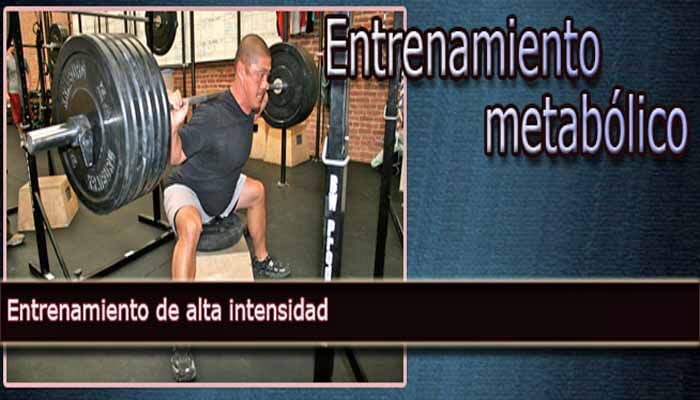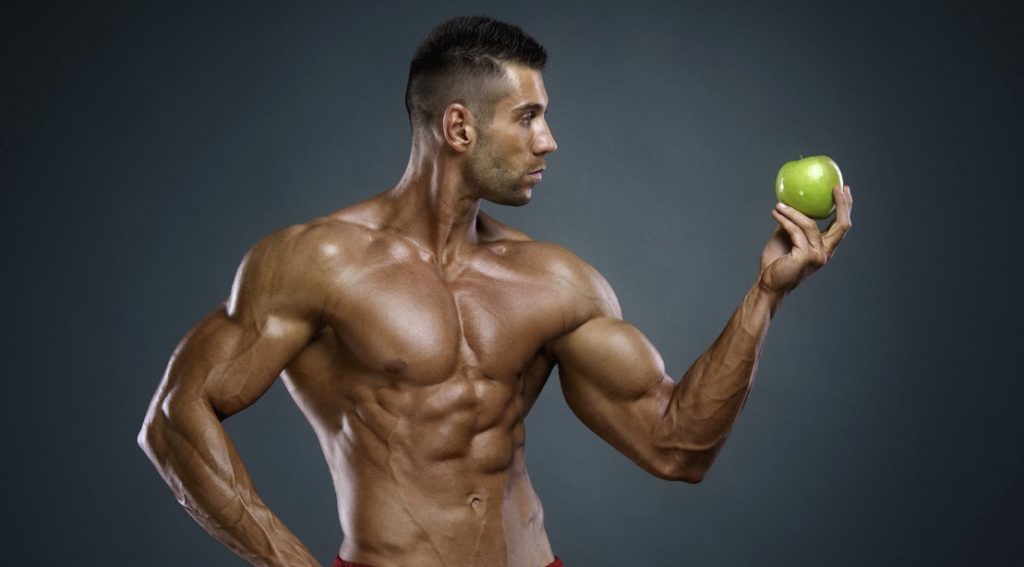A brief definition of metabolic training is to perform structural and compound exercises with very little rest time between sets in order to maximize calorie burning and increase metabolism during and after training.
Metabolic training involves large muscle groups
“Structural and compound exercises” are types of exercises (such as the squat or the deadlift ) that require a greater amount of energy because they are involved various muscle groups and joints such as the back, legs, glutes, hamstrings, chest and shoulders. The seated bicep curl is the exact opposite of a metabolic workout.
A correct metabolic training has to have almost all compound exercises, which means that the spine, legs and arms are worked. I believe that you can still do a metabolic workout without compromising your legs in each session, as long as the weight lifted is quite heavy, or the intensity of the exercise is very high. For example, doing a bench press and then a few pull-ups can be very metabolically intense.

Metabolic training is high intensity
The metabolic training is of high intensity. If you are completing a metabolic workout and you are not breathing hard and sweating a lot, you are doing something wrong. Ideally, you should lift as heavy as you can and rest as little as possible between sets.
The downside to some metabolic workouts is that they can be so intense that your lips turn white, you turn pale, and you feel like you want to throw up. Personally, I like the workouts to be hard, but not so hard that you don’t want to train again. On a scale of 1 to 10, the workouts I do are around 5 to 7, in terms of their metabolic intensity. If you do metabolic workouts very frequently or all the time, your body may not be recovering properly.
The extreme of metabolic training is CrossFit, where you repeat some intense exercises in a circuit with little or no rest time, in order to push your body to its absolute limit. This type of training is generally reserved for veteran and military athletes, but more recently it has been adopted by many bodybuilders and powerlifters.
Metabolic training makes you feel the burn
A metabolic workout should help create a burning sensation in the muscles you are working on. So you should feel the burn in your muscles when you do the last 2-3 reps of a certain exercise. While the muscle stimulation of metabolic training is not as deep as a muscle building or hypertrophy program, where a muscle is hit throughout the workout, it is still important.
It is not clear exactly what causes muscle burn (the old theory of lactic acid build-up has already been disproved) We know that with increased muscle burning comes a favorable hormonal response to help the body burn fat and / or strengthen muscles.
Benefits of metabolic training
These are some of the benefits of a metabolic workout:
1. Improved cardiovascular capacity
While metabolic training is not “aerobic” like running, some studies have shown that anaerobic exercise such as HIIT can increase cardiovascular capacity beyond that experienced by athletes on an aerobic exercise program.
2. Improves the hormonal profile
Several studies have shown that hormones that promote “lipolysis” (the technical term for fat loss) are increased as a result of high intensity resistance training. I don’t want to bore you with all the studies, but strength training in general has been shown to help improve hormonal profile and metabolic training is arguably the best type of strength training to get the most powerful hormonal response.
3. Burning calories
While calorie burning studies come to different conclusions as to the total calories a metabolic workout burns, that is certainly a lot of calories. The calorie burn during a workout is around 500 calories for a 30-minute workout, but it also increases the metabolic rate between 10% and 25% for up to 48 hours, with some studies showing an increase in the metabolic rate up to even 72 hours. This equates to hundreds of additional calories, which over the course of a few workouts can become significant.

Metabolic exercises or that can be used for this type of training:
Here are just a few examples of what might be considered “metabolic exercises.”
Olympic lifting and PR Hang clean
Standing barbell press from the floor
Conventional squat
Dumbbell squat
Paused Squat (like the one on the cover photo)
Dumbbell Lunges
Barbell Lunges
Single Leg Lunges
Box Jumps
Conventional Deadlift and of all types
Bench press
Bench press with different types of grips
Press francez

